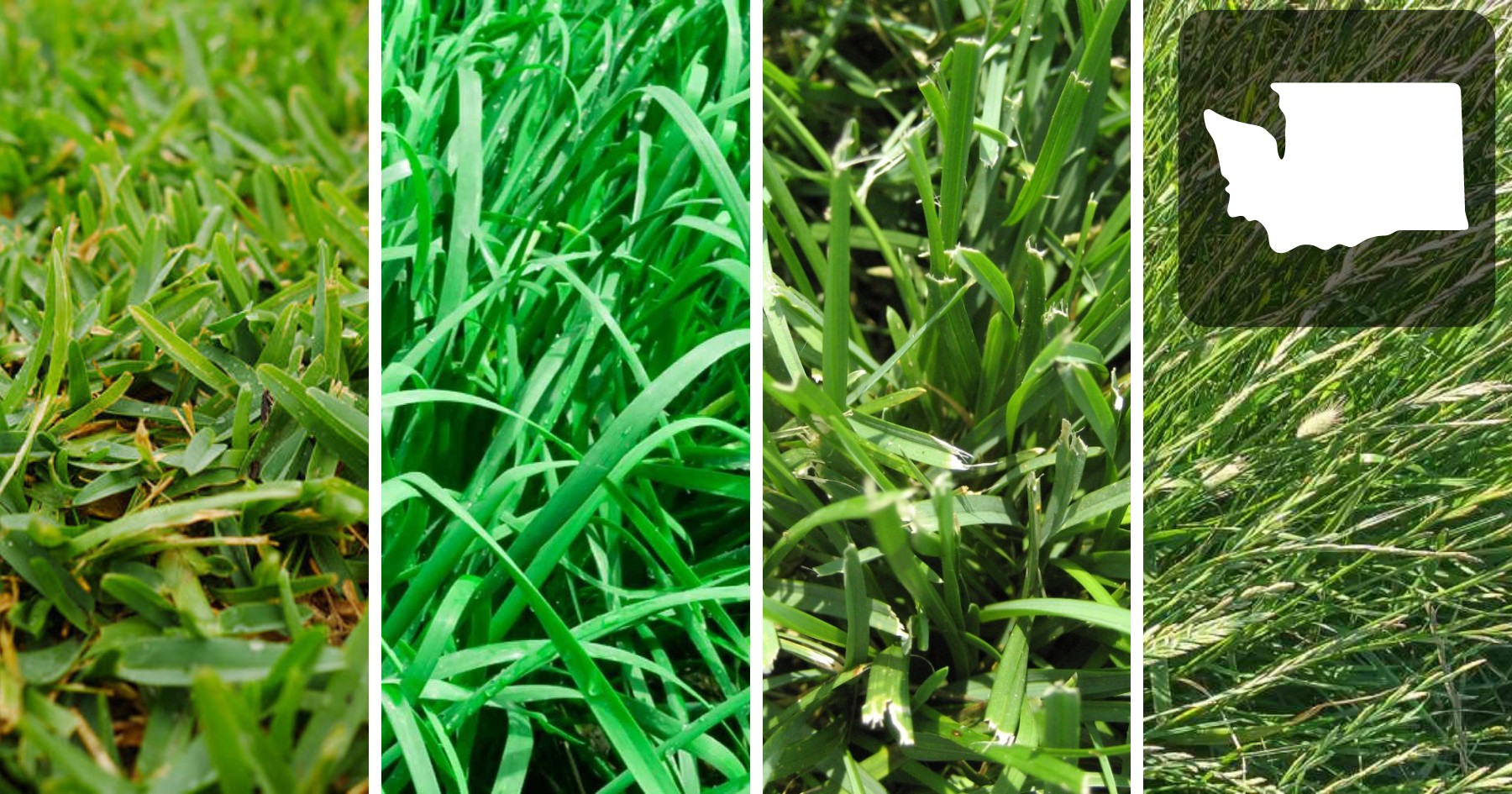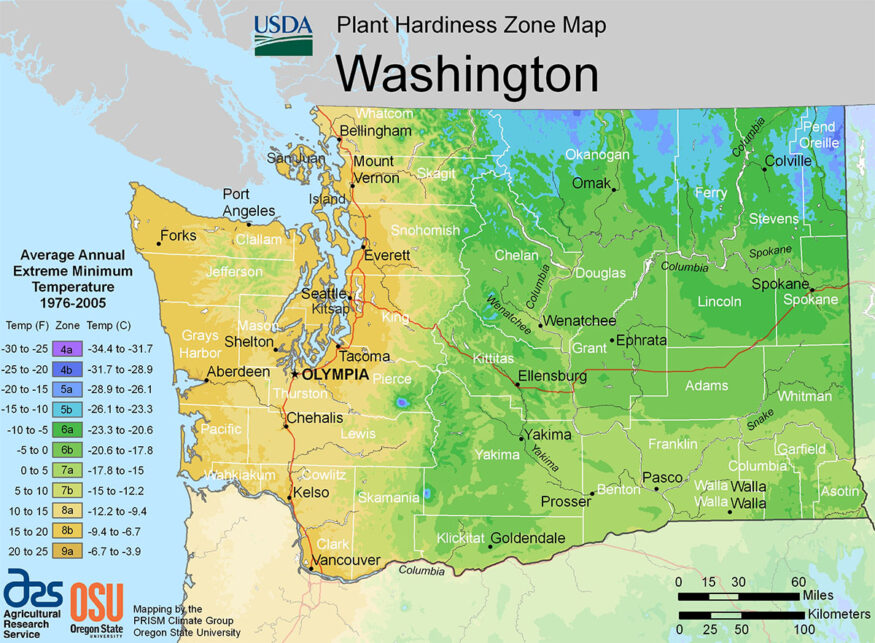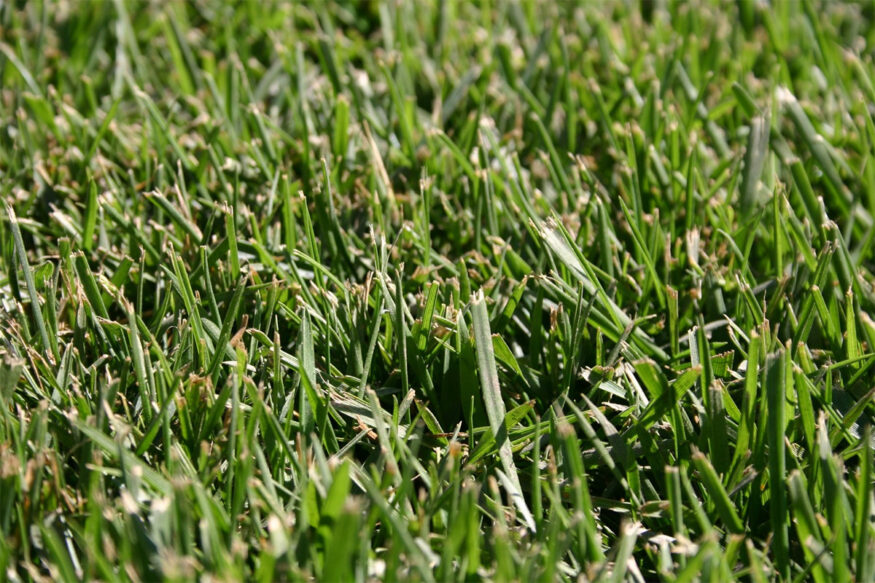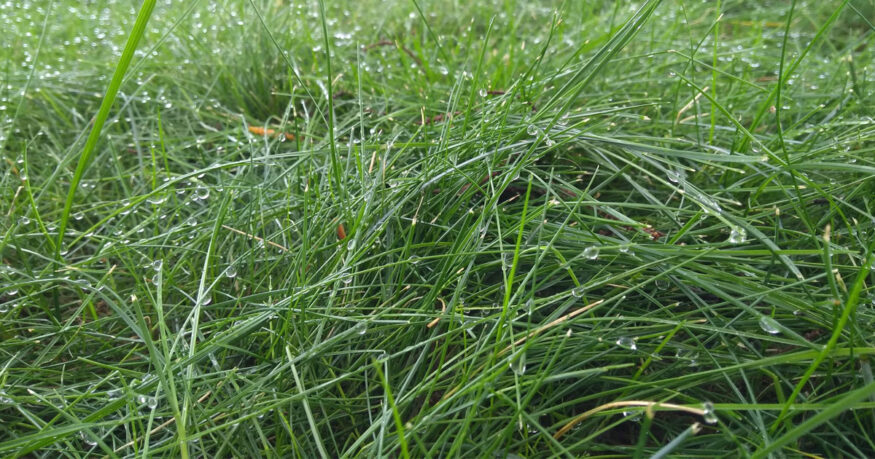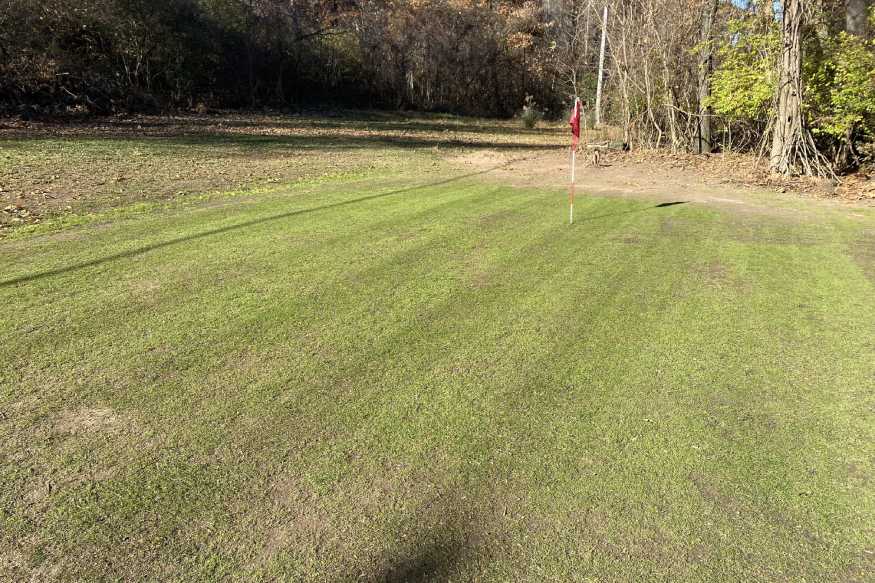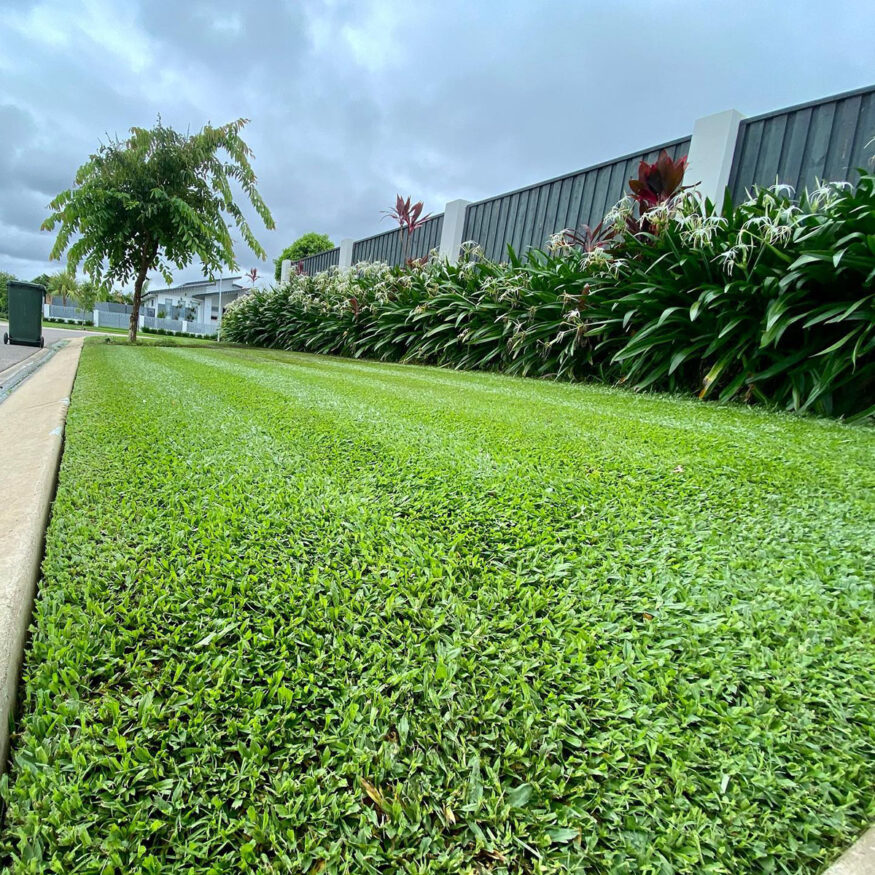Washington’s diverse climate offers unique challenges and opportunities for homeowners looking to establish lush, green lawns. The state’s varied landscape, ranging from coastal areas with wet winters to drier eastern regions, requires careful consideration when choosing the ideal grass seed.
Understanding how different grass types perform in Washington’s climate zones ensures a healthier, more vibrant lawn in your yard.
So, what is the best grass seed for Washington? For Western Washington’s moderate climate and abundant rainfall, turf-type perennial ryegrasses, fine-leaved fescues, and bentgrasses are preferred. In contrast, Eastern Washington’s more extreme conditions favor hardier grass varieties like Kentucky bluegrasses and fine-leaved fescues. For areas susceptible to drought, buffalograss is a resilient option.
Ever wondered how to exactly plant and nourish these types of grass to guarantee their flourishing growth? Read on to discover the science behind the perfect lawn.
Key Takeaways
- Choose grass seed suited to Washington’s diverse climate for a healthy, vibrant lawn.
- Consider cool-season grasses for their adaptability to the region’s varied landscape.
- Keep lawn care strategies and selection factors in mind for optimal lawn maintenance.
[ez-toc]
Decoding Washington’s Climate: What Does It Mean for Your Lawn?
Washington’s climate can be quite diverse, but let’s break it down to help you make the best decision for your lawn. The state has two main climate zones, with the western part experiencing mild temperatures and heavy rainfall, while the eastern part has colder winters and hotter summers.
In Western Washington, you’ll generally encounter moderate temperatures, with winters that are cool but not freezing, and summers that are warm and comfortable. The area receives significant rainfall, which can benefit your lawn by providing ample moisture. The turf-type perennial ryegrasses, fine-leaved fescues, and bentgrasses are well-adapted to these conditions.
On the other hand, Eastern Washington experiences more extreme temperatures, with cold winters and hot summers. These conditions require a hardier grass variety that can handle both temperature extremes and less rainfall. For this region, Kentucky bluegrasses and fine-leaved fescues are great options.
| Washington Climate Zone | Best Grass Seed Options |
|---|---|
| Western Washington | perennial ryegrass, tall fescue |
| Eastern Washington | Kentucky bluegrass, Fine Fescue |
| Areas Susceptible to Drought | Buffalograss |
Cool-Season Grasses: A Deep Dive
Kentucky Bluegrass: A Classic Choice
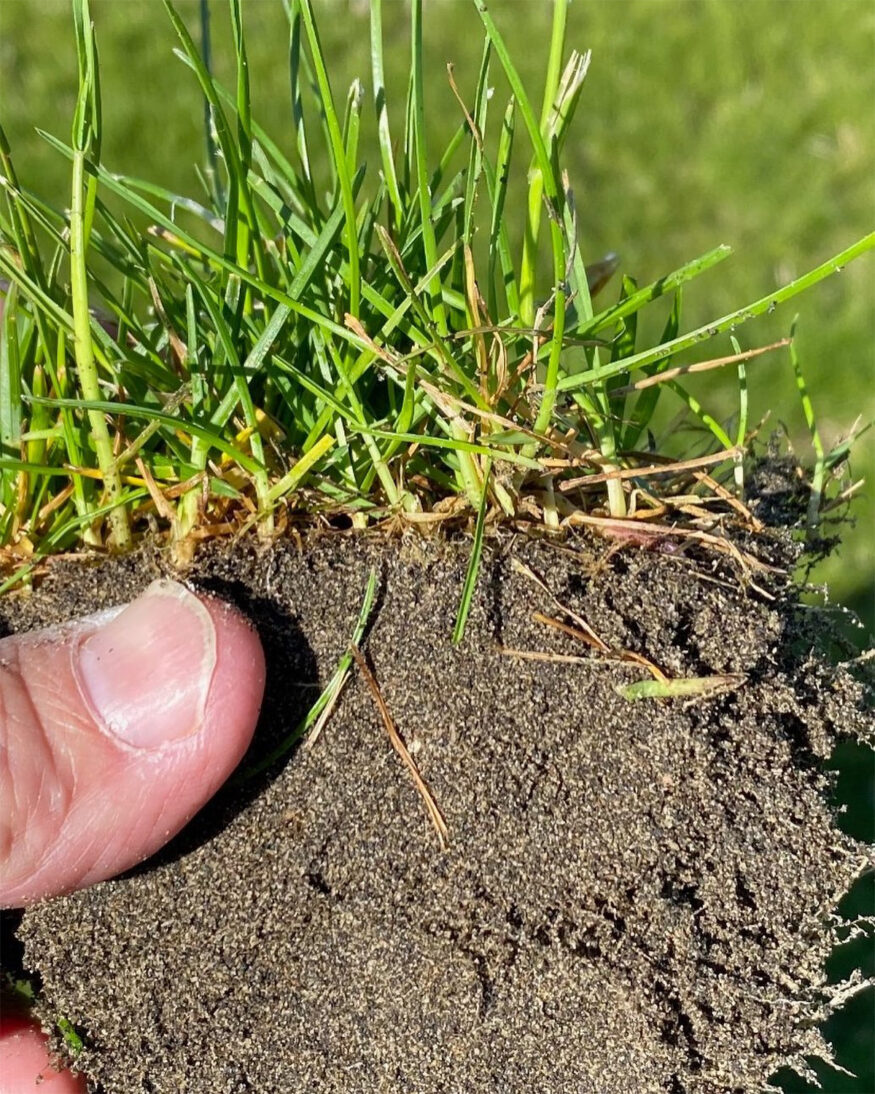 Source: mtnviewseeds on Instagram
PIN IT
Source: mtnviewseeds on Instagram
PIN IT
| Also Known As | Poa pratensis L. |
| Type of Grass | Cool season perennial |
| Optimal Zones | Northern cool season zone, transition zones |
| Root Structure | Shallow |
| Winter Hardiness | Excellent |
| Shade Tolerance | Poor to Good |
| Water Requirements | High |
| Drought Tolerance | Poor |
| Self Repair Capacity | Excellent |
| Overall Maintenance Requirements | High |
Kentucky bluegrass is a popular cool-season grass known for its strong winter hardiness and limited shade tolerance. This grass species is great for high-traffic areas and requires moderate water and maintenance requirements. If you’re in search of a traditional, dense turf that can withstand the unpredictable Washington winters, Kentucky bluegrass might be the choice for your lawn.
To plant this grass, prepare a well-draining, fertile soil with plenty of sunlight. Regular mowing, watering, and fertilization will keep your Kentucky bluegrass lawn looking its best.
Tall Fescue: The Hardy Grass
| Also Known As | Lolium arundinaceum (formerly Festuca arundinacea) |
| Type of Grass | Cool season perennial |
| Optimal Zones | Northern through transition zones |
| Root Structure | Deep |
| Winter Hardiness | Excellent |
| Shade Tolerance | High |
| Water Requirements | Medium to High |
| Drought Tolerance | Excellent |
| Self Repair Capacity | Limited |
| Overall Maintenance Requirements | Low |
Tall fescue, a cool-season grass cherished for its drought-resistance and vigorous growth, thrives in various soil types and adds durability to your lawn. It’s particularly suitable for Eastern Washington areas, thanks to its deep root system and adaptability to different weather conditions.
Sow tall fescue seeds in well-prepared soil, preferably in the early fall. Regular mowing and modest fertilization are enough to maintain a healthy tall fescue lawn.
Fine Fescues: The Shade Lovers
| Also Known As | Hard fescue, strong creeping red fescue, slender creeping red fescue, sheep fescue, chewings fescue; Festuca L. |
| Type of Grass | Cool season perennial |
| Optimal Zones | Northern zones |
| Root Structure | Medium |
| Winter Hardiness | Excellent |
| Shade Tolerance | Excellent |
| Water Requirements | Medium to High |
| Drought Tolerance | Excellent |
| Self Repair Capacity | Limited |
| Overall Maintenance Requirements | Low |
Fine fescues, including varieties like red fescue, hard fescue, sheep fescue, and chewings fescue, are perfect for homeowners looking to establish a low-maintenance, shade-tolerant lawn. These cool-season grasses thrive in the Pacific Northwest, especially in shaded, cooler areas of your garden.
Plant fine fescues in late summer or early fall, watering moderately until established. Minimal mowing and fertilization are required, making these grasses a good choice for a low-maintenance lawn.
Perennial Ryegrass: The Fast Grower
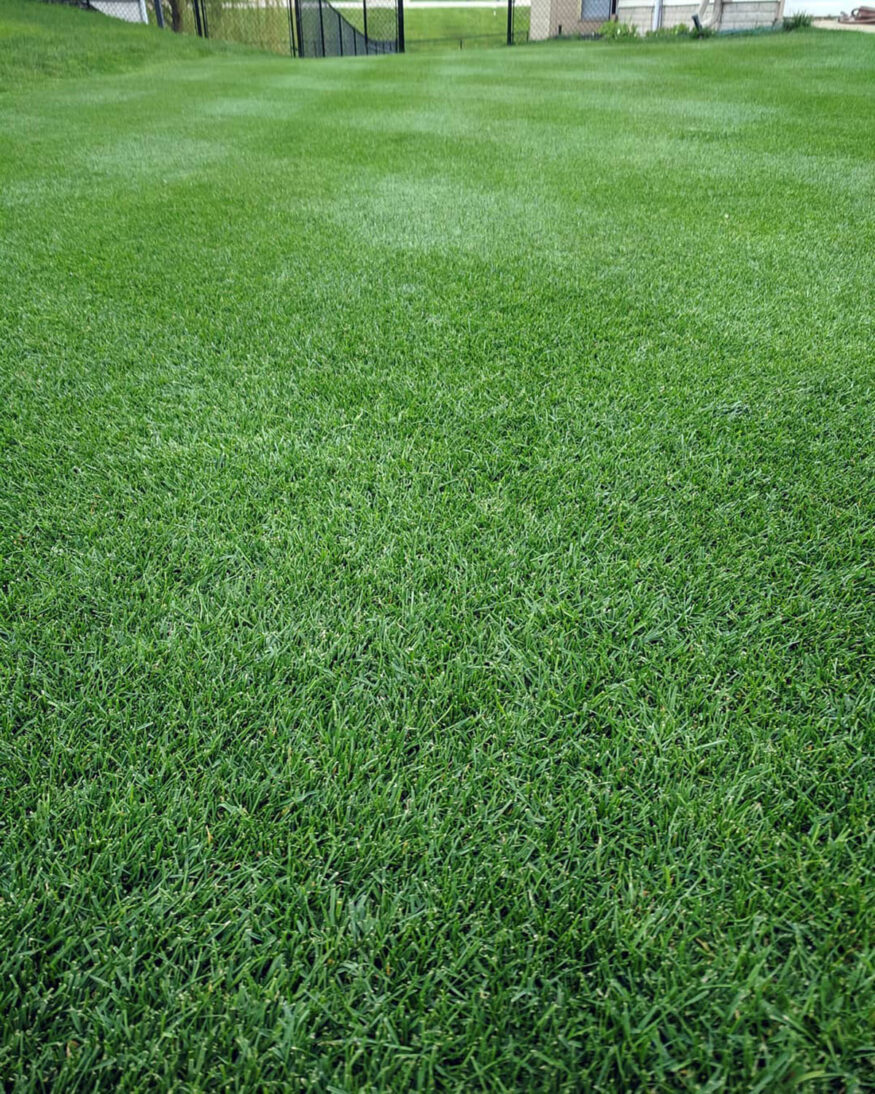 Source: ryanknorrlawncare on Instagram
PIN IT
Source: ryanknorrlawncare on Instagram
PIN IT
| Also Known As | Lolium perenne L. |
| Type of Grass | Cool season perennial |
| Optimal Zones | Mild northern zones |
| Root Structure | Deep |
| Winter Hardiness | Good to excellent |
| Shade Tolerance | Moderate |
| Water Requirements | High |
| Drought Tolerance | Good |
| Self Repair Capacity | Excellent wear tolerance |
| Overall Maintenance Requirements | Moderate to high |
Perennial ryegrass is praised for its speedy germination and ability to grow in both sun and shade, making it an ideal choice for overseeding your lawn. This cool-season grass handles foot traffic and compacted soils well, adapting quickly to its environment.
To plant, prepare well-draining soil and ensure ample sunlight. Regular mowing, watering, and fertilization will keep your perennial ryegrass looking fresh and vibrant.
Colonial Bentgrass: The Soft, Carpet-like Grass
Colonial bentgrass, known for its fine texture and carpet-like appearance, is another cool-season grass that thrives in the Pacific Northwest. It’s often used on golf courses but can also make a soft, comfortable lawn for your Washington home.
Sow colonial bentgrass seeds in well-prepared soil, ensuring adequate drainage. This grass requires more frequent mowing than other cool-season varieties, as well as a consistent fertilization and watering schedule to maintain a lush appearance throughout the year.
Warm-Season Grasses: A Thorough Examination
Warm-season grasses are a group of grass species that thrive in hot and dry climates, and are commonly found in tropical and subtropical regions. These grasses are characterized by their ability to withstand drought and heat stress, which makes them suitable for certain areas in Washington, especially during the warmer months.
Let’s take a closer look at one of the popular warm-season grass options: buffalograss.
Buffalograss: The Native Choice
| Also Known As | Buffalograss; Buchloe dactyloides |
| Type of Grass | Warm season perennial |
| Optimal Zones | Northern, transition, and southern zones |
| Root Structure | Very deep |
| Winter Hardiness | Great |
| Heat Tolerance | Great |
| Shade Tolerance | Poor |
| Water Requirements | Low |
| Drought Tolerance | Excellent |
| Self Repair Capacity | Moderate to high |
| Overall Maintenance Requirements | Low after establishment |
Buffalograss is a native option that adapts well to different soil types and requires minimal maintenance. It’s a good choice for homeowners who want a low-input, drought-tolerant lawn. Some of the benefits of buffalograss include:
- Drought resistance: This grass can go dormant during periods of low water, turning brown but reviving once water becomes available again.
- Low maintenance: Buffalograss requires less frequent mowing, fertilizing, and watering than other grass species.
- Native option: It is a well-adapted grass option for the local environment.
However, buffalograss also has its downsides. For instance, it doesn’t tolerate heavy foot traffic well and isn’t as shade-tolerant as some other grass species. Additionally, it can take longer to establish compared to some other grass seeds, but once established, it forms a thick, low-growing turf.
Planting and Maintenance: To plant buffalograss, choose a sunny location and prepare the soil by removing all existing vegetation.
Sow the seeds evenly, covering them lightly with soil, and water the area thoroughly. It’s best to plant buffalograss during late spring or early summer when temperatures are consistently above 60°F. For maintenance, mow the lawn at a height of 3-4 inches, and don’t over-fertilize, as it can lead to excessive thatch buildup.
Overall, understanding the characteristics of warm-season grasses, such as buffalograss, helps make informed decisions for your lawn. Take into account your local climate and specific needs when choosing the right grass seed for your Washington home.
Grass Seed Selection: Factors to Keep in Mind
Maintenance Needs: Balancing Beauty and Effort
Choosing grass seeds with a suitable level of maintenance is essential for your yard. Think about how often you’re willing to mow, fertilize, and water your lawn.
High-maintenance grasses may provide lush and resilient beauty, but they often require more mowing, fertilization, and water.
Low-maintenance grasses are better suited for homeowners who prefer less involvement with lawn upkeep.
Shade Tolerance: For Those Shady Corners
Selecting grass seeds with proper shade tolerance is crucial for areas where sunlight is limited. Some grass types thrive in shady conditions, so consider these shade-tolerant options if your yard includes shadowy corners.
Keep in mind that most grasses prefer full sun, but some stand out for their capacity to tolerate shade better.
Drought Tolerance: Surviving the Summer
When choosing grass seeds for your Washington lawn, consider drought tolerance, especially in light of the warmer summer months.
Drought-tolerant grasses can preserve water and maintain their appearance under challenging conditions. Opt for varieties that can withstand limited moisture availability, ensuring that your lawn stays lush and healthy even during dry periods.
Wear Tolerance: For Play and Parties
Lastly, it’s important to consider wear tolerance. High-traffic areas require grass seed mixtures that can handle foot traffic without damaging the lawn. Some grasses are more resilient than others, offering higher foot traffic tolerance, and are therefore perfect for play and parties. Make sure to choose a grass seed blend that withstands everyday use and stays lush despite high activity levels.
Remember to keep these factors in mind as you choose the best grass seed for your yard, ensuring a vibrant and healthy lawn year-round.
Expert Lawn Care Strategies for Washington Lawns
Mowing
To maintain a healthy lawn, it’s essential to mow regularly. Keep your grass height around 2 to 3 inches, and avoid cutting more than 1/3 of the grass length at once, as suggested by Washington State University. This practice will help develop deeper roots, improve drought and disease resistance, and help crowd out weeds.
Fertilizing
Fertilizing is another crucial aspect of lawn care. Be sure to create a fertilizing schedule based on the specific needs of your chosen grass type. It’s generally a good idea to fertilize at least twice a year – once in the spring and once in the fall – to support optimal growth.
Aerating
Aerating your lawn helps improve water and nutrient absorption by loosening compacted soil. It’s best to aerate during the growing season, ideally in the fall, when grass can grow back easily after the process.
Use a suitable aerator for your lawn size and soil type.
Watering
Keep an eye on irrigation and ensure that your lawn receives adequate water, especially during the dry summer months. An inch to an inch and a half of water per week is usually sufficient. Water your lawn in the early morning to reduce water evaporation and maximize absorption.
By following these simple lawn care strategies and choosing the right grass seed for your Washington lawn, you’ll be well on your way to enjoying a lush, green, and healthy yard.
Frequently Asked Questions
What type of grass seed is suitable for Western Washington?
In Western Washington, you’ll find success with a mixture of cool-season grasses such as Kentucky Bluegrass, Fine Fescue, and Perennial Ryegrass. These varieties are adapted to the region’s wet winters and mild, dry summers.
Which grass varieties thrive in the Pacific Northwest?
The Pacific Northwest’s climate favors cool-season grasses. Some top choices include Kentucky Bluegrass, Fine Fescue, Perennial Ryegrass, Tall Fescue, and Colonial Bentgrass. Blends of these grasses often provide the best results.
What is the best grass for full sun and drought in Washington?
For full sun and drought conditions in Washington, consider hardy varieties such as Tall Fescue and Kentucky Bluegrass. These grasses have higher drought tolerance and can better withstand dry periods.
What native grass seeds are recommended for Washington state?
Incorporating native grass species like Bluebunch Wheatgrass and Idaho Fescue is a wise choice. They require less maintenance and are more ecologically friendly as they are well-adapted to the local conditions.
Is Perennial Ryegrass a good choice for Washington?
Yes, Perennial Ryegrass is a popular choice for Washington lawns due to its adaptability, rapid germination, and fine texture. It can be mixed with other cool-season grasses for enhanced lawn performance.
Does Tall Fescue grass grow well in Eastern Washington?
Tall Fescue, a drought-tolerant cool-season grass, is a suitable choice for Eastern Washington, where summers can be hotter and drier. It has a deep root system, allowing it to handle dry periods better than some other grasses.
